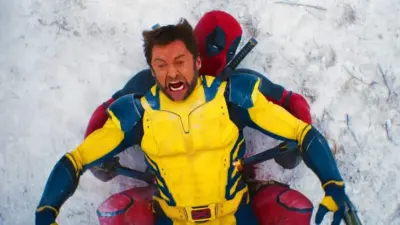The quote “No two persons ever read the same book” encapsulates truth about the human experience of literature and the arts. When we engage with a book, we’re not merely absorbing words on a page; we’re participating in an intricate dance of imagination, personal experience, and perception. Each reader brings a unique perspective to a book, shaped by their background, experiences, emotions, and thoughts. This individuality means that every person visualizes the story differently, learns distinct lessons, and shares their interpretations uniquely with others. This blog will delve into the ways these differences manifest and enrich our collective understanding of literature.
No two persons ever read the same book
Visualization: The Mind’s Unique Canvas
When reading a book, our minds act as a canvas, painting vivid images based on the author’s words. However, the colors, textures, and details of these images are unique to each reader. This phenomenon can be attributed to several factors:
- Personal Experiences: Our past experiences heavily influence how we visualize a story. A scene set in a bustling city might evoke different imagery for someone who has lived in New York City compared to someone from a small rural town. The former might picture tall skyscrapers, crowded streets, and the cacophony of urban life, while the latter might imagine a more subdued, less overwhelming cityscape.
- Emotional State: Our current emotional state also affects how we perceive and visualize a story. A reader feeling joyful might interpret a character’s actions as playful and light-hearted, while someone who is feeling melancholic might see the same actions as tinged with sadness or regret.
- Cultural Background: Cultural differences can lead to varied interpretations and visualizations of the same text. For instance, descriptions of food, traditions, or social interactions might be perceived and visualized differently by readers from different cultural backgrounds.

Learning Different Lessons
Books are not just stories; they are vessels of wisdom, moral lessons, and philosophical insights. However, the lessons one gleans from a book can vary widely from reader to reader:
- Individual Beliefs and Values: Our beliefs and values play a significant role in shaping the lessons we learn from a book. A story about a rebellious character might inspire some readers to value individualism and freedom, while others might see it as a cautionary tale about the importance of conforming to societal norms.
- Life Stage and Circumstances: The stage of life we are in can also affect the lessons we take away from a book. A young adult might find a coming-of-age story deeply relatable and draw lessons about identity and self-discovery, while an older reader might focus more on themes of legacy and reflection.
- Personal Struggles and Triumphs: Our personal challenges and triumphs influence how we interpret the messages within a book. Someone who has overcome significant adversity might find inspiration and strength in a story of resilience, while another might find solace in themes of forgiveness and healing.
Sharing Unique Interpretations
The way we share and discuss books with others is another area where our individuality shines. Discussions about books often reveal the diverse perspectives and interpretations of its readers:
- Narrative Emphasis: When sharing our thoughts on a book, we tend to emphasize the parts of the narrative that resonated most with us. This selective sharing can highlight different aspects of the story that others might have overlooked, leading to richer, more nuanced discussions.
- Interpretative Lens: Our interpretative lens, shaped by our personal context, influences how we discuss a book. For instance, a person with a background in psychology might analyze characters’ behaviors and motivations more deeply, while someone with a historical interest might focus on the accuracy and significance of the setting.
- Emotional Impact: The emotional impact a book has on us can drive how we share our experience with others. A book that made us laugh, cry, or think deeply will often be communicated with a corresponding intensity, which can, in turn, affect how others perceive the book.
The Beauty of Diverse Perspectives
The diversity in how we read and interpret books is a testament to the richness of human experience. This diversity is not just a point of difference; it is a source of beauty and depth. When we share our unique perspectives on a book, we contribute to a collective tapestry of understanding that is far more intricate and profound than any single viewpoint.
- Enhanced Understanding: By discussing books with others, we gain insights that we might have missed on our own. This collaborative exploration deepens our understanding and appreciation of the story.
- Broader Empathy: Hearing how a book resonated with others can expand our empathy and understanding of different experiences and viewpoints. This process helps us appreciate the diverse ways in which people relate to the world around them.
- Continuous Learning: The exchange of interpretations and lessons from books fosters a culture of continuous learning. Each discussion can reveal new layers of meaning and significance, keeping the experience of reading dynamic and evolving.

Conclusion
The quote “No two persons ever read the same book” beautifully captures the essence of reading as a deeply personal and uniquely transformative experience. Each reader visualizes the story in their own way, learns different lessons, and shares their interpretations uniquely, enriching the literary landscape with a mosaic of perspectives. This diversity of thought and perception is what makes literature so powerful and enduring. As we continue to read and share our stories, we not only expand our own horizons but also contribute to a greater collective understanding and appreciation of the human experience.
Also Read: Memories warm you up from the inside. But they also tear you apart.





